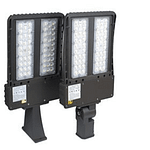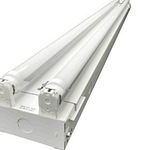We’ve all seen it before; the flickering, fluorescent lights at doctor’s offices, meeting rooms, gymnasiums and more. Our eyes are instantly drawn towards this scene, causing distractions, headaches, annoyance, and lack of productivity when it is most needed. Today, we are going to dive deeper into what causes flickering in traditional bulbs and how this phenomenon can negatively impact you.
Causes of Light Flicker
The common light flicker is considered a fast change of photometric quantities of a light source. It is created as the final result of a lighting system’s design, installation, and application. The flicker is caused by a change in the supply power phase, creating a fast, periodic change of optical radiation. While all light bulbs are prone to flickering, fluorescents are the most common bulbs to fall prey to flicker.
Flicker Impacts on the Human Body
Regular exposure to flickering lights has a negative impact on the human body. Recent studies show that flickering lights impact productivity, focus, comfort, and even our emotional well-being. Flickering lights can so as far as making fast approaching objects or vehicles appear as if they are moving slower, and are a known cause for seizures in epileptics. Exposure to flickering long term can cause consistent headaches and migraines, even bringing on seizures in non-epileptics as well.
Avoiding Flickering with LEDs
You can avoid the frustration and negative side effects of flickering lights by using LEDs. LEDs are a direct current device, meaning as long as there is constant current, LEDs illuminate with no signs of flicker. It is important when installing LEDs to make sure there is constant current regulation to avoid future flickering.
Find LEDs at Sitler’s!
Find high quality LED lighting to replace your flickering bulbs at Sitler’s LED Supplies today! Give us a call at (319)-519-0039 or send us a request to get started!
Posted in LED Lighting Basics















